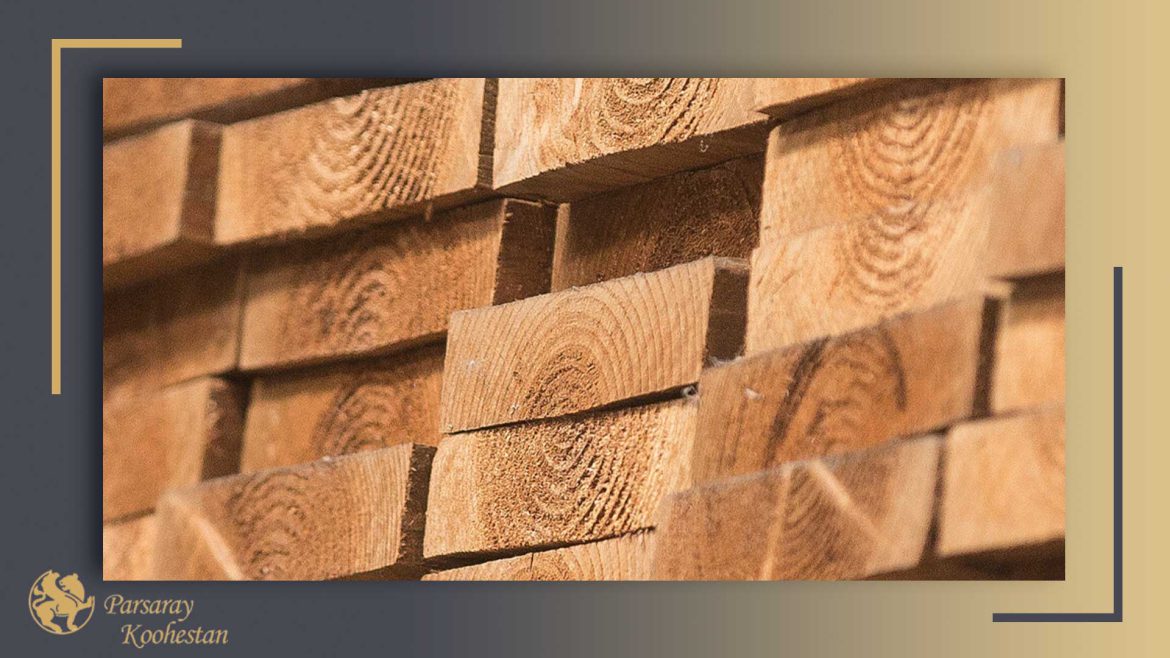
Our main goal at Parsaray is to create practical Thermowood solutions for creating wooden structures and accents. We hope you will appreciate our Thermowood as much as we do since we know the significant return on investment Thermowood can provide for your home. The most durable and visually beautiful kind of wood available for home building or renovation projects is Thermowood. This is a result of the unique heat treatment process that Thermowood employs, which cleans the wood of organic compounds and disassembles hydroxyl groups ingrained in the wood’s cellular structure. Because of this, the wood is permanently changed, giving it more excellent durability and a more attractive surface. This post will clarify Thermowood’s history from when this thermally treated timber is being utilized.

So, where did the idea for thermo-modification come from? The first thermo-treatment products were produced in the United States in 2007. But the thermo-modification process has been around since at least 1915 when Thermowood history marked its being. Harry Tiemann, a kiln expert at the Forest Products Laboratory in Madison, Wisconsin, discovered the process. He found that the high-heat steam treatment had significantly decreased the wood’s ability to absorb water.
Thermowood is a special kind of wood that does not absorb water. As a consequence, the material’s lifetime is significantly increased. The Forest Products Laboratory persisted with its investigation and testing of the thermo-modification procedure, which eventually led to the invention’s receipt of a patent. Even though the method’s research lasted into the 1980s, there had been very little, if any, economic success in selling the now-famous Thermowood product up to that time.
Thermowood lasts for about many years with minimal maintenance. This is the outcome of a procedure known as hydrolysis. The timber used to create Thermowood is heated to a temperature of more than 390 degrees Fahrenheit in an oxygen-free environment. This process causes the loss of organic molecules and the irreversible destruction of hydroxyl groups in the cellular structure of the wood. This treatment has made the wood resistant to fungus, insects, and weather impacts. The market for ecologically friendly building products is growing as the world moves toward sustainability. We at Parsaray are happy to announce that we are Thermowood’s exclusive Iranian distributor. In addition to being versatile, durable, and eco-friendly, our Thermowood is gorgeous.

Beginning in the 1990s, Thermowood had a successful commercial run. New environmental restrictions that came into effect as the 21st century approached forced European nations to pay more attention to environmental challenges. Europe became especially interested in technology as a consequence. The development of thermo-modification technologies was significantly influenced by the regulation known as the European Biocides Directive. Thermowoods were created via unique approaches in some European countries, like France, Germany, Netherlands, and Finland.
Thermowood is now utilized on a global scale. Some of the most popular applications for thermally treated wood are cladding, decking, and other outside structures like fences and sheds. Thermowood is perfect for usage outside due to its resilience to weather and other environmental variables. You won’t have to worry about weather, fungus, or insect damage if you use Thermowood to build your outdoor wooden structures. Thermowood is made to be durable for an extended period.

Throughout history, humans have realized that drying or burning wood may considerably increase a material’s resistance to various environmental factors. As a consequence, several studies have been conducted in different countries. Finland created the Thermowood technique after years of investigation and testing with heat-treated wood. The following research and testing have been performed that change the Thermowood history.
Thermowood history shows that these woods can withstand changes in the inside and outdoor surroundings, as well as heat, cold, rain, humidity, and insects. Thermowoods then are divided into two classes:

Now that we know Thermowood history, this material is being sold globally at the highest speed. Thermowood is another stunning component that may be used for interior designs. Many clients use the wood to adorn various parts of their homes with wooden accents or even install it as an accent wall in one of the rooms in their homes. The stunning exotic finish of Thermowood gives any space an air of refined sophistication.
At Parsaray, we aim to help you choose the Thermowood applications most beneficial to your house. Please get in touch with us as soon as possible for a no-cost estimate or more details.